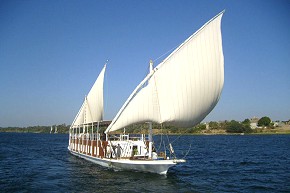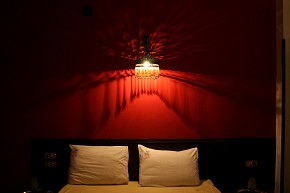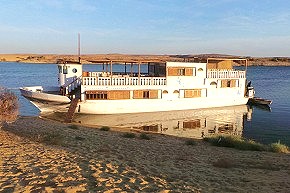We Provide
- Building Land
- Gorf *2202 (175 sqm)
- Aqalta *2216 (350 sqm)
- Gabawi *1712 (350 sqm)
- Gorf *2203 (350 sqm)
- Seoul *2204 (400 sqm)
- Gorf *2105 (525 sqm)
- Aqalta *2226 (700 sqm)
- Gorf *2206 (700 sqm)
- Aqalta *2207 (1,050 sqm)
- Aqalta *2236 (3,500 sqm)
- House Building Service
- Architecture
- Real Estates
- Hotel in Gezira
- Algana Compound, Qurna
- Villa Hana, Ramla
- Villa Hana, Ramla
- Villa Suraya, Habu
- Beit Tabuna, Habu
- Shell Apartment Papyrus, Habu
- Shell Apartm. House Mudir Gorf
- Shell Villa Farha, Gorf
- Apartment Hatshepsut 2, Gezira
- Apartment Hatshepsut 3, Gezira
- Apartment Hatshepsut 4, Gezira
- Holiday Flats
- Hatshepsut 1 (1 BR), Gezira
- Hatshepsut 2 (1 BR), Gezira
- Nile View (1 BR), Ramla
- Hatshepsut 3 (2 BR), Gezira
- Hatshepsut 4 (2 BR), Gezira
- Hatshepsut 5 (2 BR), Gezira
- Hatshepsut 7 (2 BR), Gezira
- Hatshepsut 9 (2 BR), Gezira
- Hatshepsut 6 (3 BR), Gezira
We Organise
We Report
- Sorry, no more news!
- News 2014 (26)
- News 2013 (76)
- News 2012 (92)
- News 2011 (125)
- News 2010 (31)
- News 2009 (12)
- News Overview
Useful Tools
Dahabiya Nile Cruises• from Esna to Aswan |
Privately Owned Hotel for Sale, Luxor Westbank• Centrally, quietly located in Gezira |
Lake Nasser Cruises• from Aswan or Abu Simbel |
![]()
Living in Luxor - Luxor's Rich Cultural History
Luxor West Bank
You don't have to go to Cairo or Giza when you are interested in Ancient Egyptian history and mythology. You will be delighted with the Theban Necropolis on the West Bank of Luxor. It is not by accident that Luxor is called "the treasury of Egypt". In the Valley of the Kings alone, there have been 63 tombs discovered, including the world-famous tomb of Tutankhamun (KV62), which Howard Carter found in 1922. The last fantastic discovery in the valley was tomb number KV5 in 1995, where the sons of Ramses II were buried. Furthermore, the tombs in the Valley of the Queens, the Valley of the Nobles and the Valley of the Artisans are also a must-visit. And there is so much more to discover...
Besides the tombs, there are numerous Mortuary Temples. The most famous ones are:
- Deir El-Bahri - the Mortuary Temple of Hatshepsut
- Medinet Habu - the Mortuary Temple of Ramses III
- the Ramesseum - the Mortuary temple of Ramses II and
- the Mortuary Temple of Seti I in Kurna (Qurna)
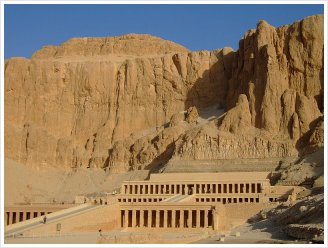
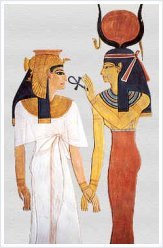
The 18 metres high Colossi of Memnon are part of the Mortuary Temple of Amenhotep III. The temple is called in Arabic Kom el-Hettân, which means hill of the sandstones. With 385,000 square metres, it was the largest temple ever built in Egypt. Excavations are ongoing. Several fallen colossal statues of pharaoh Amenhotep III have been reconstructed from parts and raised again. Moreover, a sphinx was found with a crocodile body, which is very unusual. A sphinx ordinarily has the body of a lion and the head of a person, ram, falcon or sparrow hawk.
Luxor East Bank
There are also many places of interest on the East Bank of Luxor, for example, the Luxor Temple and the Karnak Temple Complex, the latter possibly the largest religious complex in the world. Both temples were once connected through a 2,7 km long avenue with hundreds of sphinxes. This avenue had been under restoration for many years and was finally opened in November 2021. According to an official master plan, Luxor and Western Thebes (= Luxor West Bank) shall be altered into one large Open-Air Museum by 2030.
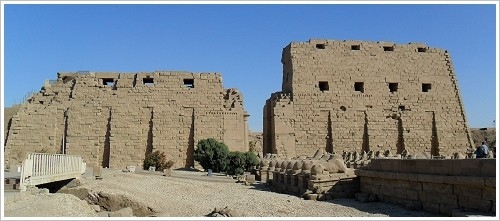
Worth seeing in Luxor is the Luxor Museum - although all pieces of Tutankhamun's tomb treasure have been moved to the Grand Egyptian Museum in Giza. The remaining excellent exhibits are perfectly presented in large air-conditioned rooms.
Exceptional is also the Mummification Museum. There, you can learn everything about the embalming arts of Ancient Egypt.
In 2007, the Luxor Heritage Center opened inside Misr Public Library. It was established to give Luxor’s tourists an understanding of Egypt’s cultural heritage. For more details see here ...
So, you will not be bored in Luxor - promised!
We organise your tailor-made sightseeing program in Luxor. Just get in touch! |
More information:
